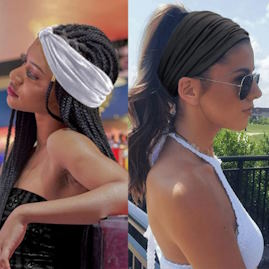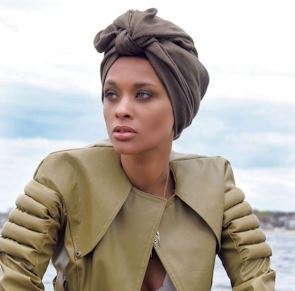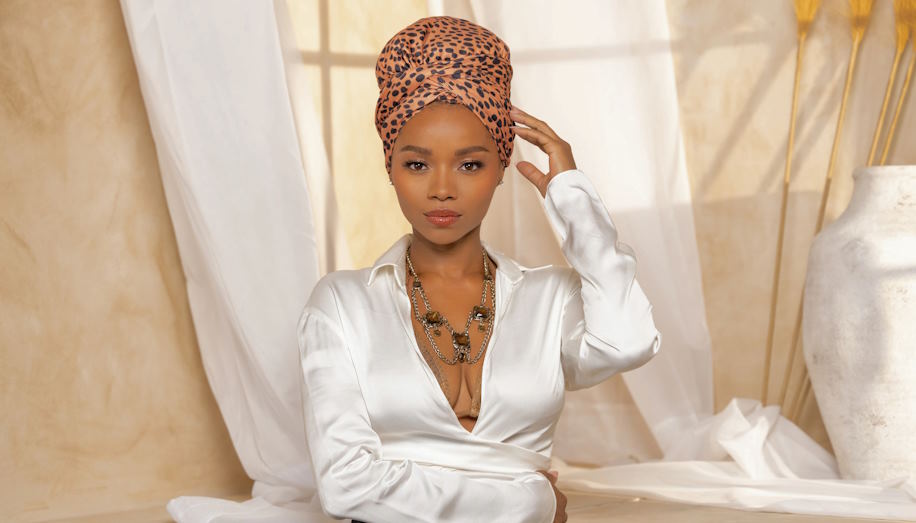Fashionable Headwraps and Turbans: Stylish Hair Accessories
Step into a realm where tradition meets trend, and cultural heritage intertwines with contemporary fashion flair. Headwraps and turbans, once regarded as symbols of identity and tradition in various cultures, have seamlessly transitioned into the mainstream as stylish and iconic hair accessories.
Cultural Influences: Unveiling the Tapestry of Headwraps and Turbans
Exploration of Various Cultures:
Headwraps and turbans have long been intertwined with the rich tapestry of cultural traditions worldwide. From the vibrant and intricate gele in Nigerian culture to the elegant pagri in South Asia, each culture has bestowed its unique touch to these versatile accessories. In Africa, headwraps signify not just fashion but also carry deep cultural meanings, representing identity, status, and even emotions. Similarly, turbans in Sikh culture are not merely a fashion statement but embody values of humility and equality. Exploring the diverse cultural roots of headwraps and turbans unveils a fascinating journey through history, tradition, and self-expression.
Impact on Global Fashion Trends:
 Beyond their cultural origins, headwraps and turbans have significantly impacted global fashion trends. Designers and fashionistas worldwide have embraced these accessories, incorporating them into runway shows, photo shoots, and everyday street style. The ability of headwraps and turbans to seamlessly blend with various fashion aesthetics has made them a symbol of inclusivity and diversity in the fashion world. This cultural fusion has not only influenced individual style choices but has also become a driving force shaping the broader landscape of contemporary fashion.
Beyond their cultural origins, headwraps and turbans have significantly impacted global fashion trends. Designers and fashionistas worldwide have embraced these accessories, incorporating them into runway shows, photo shoots, and everyday street style. The ability of headwraps and turbans to seamlessly blend with various fashion aesthetics has made them a symbol of inclusivity and diversity in the fashion world. This cultural fusion has not only influenced individual style choices but has also become a driving force shaping the broader landscape of contemporary fashion.
Versatility in Styles: Unveiling the Infinite Possibilities of Headwraps and Turbans
Different Ways to Tie and Style:
The allure of headwraps and turbans lies not only in their cultural significance but also in the sheer diversity of styles they offer. From the classic turban wraps to the more intricate African gele styles, the ways to tie and style these accessories are virtually limitless. Whether folded into a chic knot, elegantly draped, or creatively twisted into intricate patterns, each style tells a unique story. DIY enthusiasts and fashion enthusiasts alike find joy in experimenting with these headpieces, turning them into personalized expressions of style.
Adaptable for Various Occasions and Outfits:
One of the most remarkable features of headwraps and turbans is their unparalleled adaptability. These accessories effortlessly transition from casual daywear to formal occasions, offering a touch of sophistication and flair to any outfit. Whether paired with jeans and a T-shirt for a laid-back look or elegantly matched with evening attire, headwraps and turbans prove to be the ultimate accessory chameleons. Their versatility allows individuals to express their personality and adapt their style to any setting, making them a wardrobe staple for those seeking both comfort and glamour.
Materials and Fabrics: Weaving Stories of Style and Sustainability
Overview of Common Materials:
 The artistry of headwraps and turbans extends beyond their visual impact to the very materials that bring them to life. Cotton, silk, jersey, and chiffon are among the common fabrics that artisans and designers utilize to craft these expressive accessories. The choice of material not only influences the overall aesthetics but also dictates the comfort and breathability of the headwrap or turban. Exploring the diverse array of materials reveals a rich spectrum of textures, colors, and patterns, each contributing to the unique character of these stylish headpieces.
The artistry of headwraps and turbans extends beyond their visual impact to the very materials that bring them to life. Cotton, silk, jersey, and chiffon are among the common fabrics that artisans and designers utilize to craft these expressive accessories. The choice of material not only influences the overall aesthetics but also dictates the comfort and breathability of the headwrap or turban. Exploring the diverse array of materials reveals a rich spectrum of textures, colors, and patterns, each contributing to the unique character of these stylish headpieces.
Sustainable and Ethical Options:
In the era of conscientious consumerism, the fashion industry is witnessing a shift towards sustainable and ethical practices, and headwraps and turbans are no exception. Designers are increasingly opting for eco-friendly materials like organic cotton, bamboo, and recycled fabrics. Ethical production practices, fair wages, and a commitment to reducing environmental impact are becoming integral to the creation of these accessories. This section delves into the rising trend of sustainable headwrap and turban options, inviting readers to make choices that align with both their style preferences and ethical values.

 Erin Lopresti: The face behind the fashion. Discover the artistry of style with expert insights, beauty revelations, and a personal touch that transforms every reader into a trendsetter.
Erin Lopresti: The face behind the fashion. Discover the artistry of style with expert insights, beauty revelations, and a personal touch that transforms every reader into a trendsetter.